|
Keeping chickens and other poultry in winter isn’t difficult but it does require some preparation as repairing or setting up fences in 3ft deep snow or scrambling with extension cords and heat lamps to prevent frost bite in sub zero conditions isn’t easy. Each of the next 6 weeks, I’ll focus on one aspect of caring for chickens and ducks in winter The main things to prepare for are:
Managing a change or possible increase in type and number of predatorsWinter can be harsh for all animals, local wildlife included. Food is harder to find and it’s always cold. And because we feed and supplementally heat our coops it means more than just the chickens and ducks are happy to make use of both and sometimes other animals are looking not for chicken feed but chicken dinner. Below is my top tips and methods for keeping the hens safe from all the other animals that come around during winter. Rodent (mice & wood rats)These may be the smallest but they can be the most pernicious of predators to deal with when raising poultry. They are the smallest and thus the hardest to keep out. They eat the hens’ food, poop & pee all over the place (well so do the hens, but they live here on purpose), chew through stuff, and cause general mayhem. The 3 best ways to deal with them are:
Rats & mice are predators? what!? Yep. They probably won’t do too much harm to most adult birds, but they can serious injure or kill chicks and young ones. On the flip side, adult birds may also eat them so they aren’t the worst out there for outright bird deaths. Weasels (mink & ermine)These are the ones I’ve lost the most birds to, mainly mink. And why are weasels so bad? Bloodlust. Once they kill, they can kill all of the flock. Sometimes, and more commonly in ermine & mink, they go crazy once they taste that blood and go through the entire flock and kill as many as they can get ahold of, probably all if it is at night and the birds are asleep. If they are around how do I manage them? Don’t try to eradicate them. You won’t be able to and, really f***ing important is that they eat rats and mice! They are the most common and prevalent pest/predator and the mink/ermine (like hawks & owls) eat them! They can be our friends and allies!!! The key to letting them stay but keep them away from your hens? Let their prey stay around. This is the reason why I only start removing rodents if they get out of hand. When they are around the predators prefer them to chickens & ducks! Yep! Believe me! The only time I’ve had a problem is during Deep Cold & Deep Snow (the time in mid-late winter where there has been 3 feet of snow for weeks and the temps go below and stay under the single digits). This is when their prey stays cozy in their holes with their caches of nuts & seeds so they can’t get to them, so they go after the birds. This is when my .22 comes out to stay ready by the door in case I see them trying (or in) the coops and I start spreading the cayenne everywhere. Cayenne? wtf? yesireybob! Cayenne is so useful as a deterrent for any mammal (mink, ermine, lions, bobcats, wolves, coyotes, even bears). It’s almost the same stuff in the bear spray cans but cheaper and easier to use. [FYI bear spray is a deterrent but not in the same way I use the cayenne. Bear spray stops animals from attacking when you spray it on them. The cayenne is a passive deterrent.] Get a big jar of cayenne powder and sprinkle a big, solid, line around the entire coop and run, barn, etc. If a predator comes sniffing around they will get a nose or paw full of cayenne and it is a huge irritant for their sinuses and mucus membranes (hey bear spray stop charging grizzlies in their tracks!). Not only do they go away but they learn to stay away. We can all live together! Oh yeah, and chickens & ducks can’t taste/smell capsacin (the active ingredient in cayenne and other spicy peppers) so it doesn’t bother them at all! so perfect! (Note: it will irritate pets, like your cute kitties and doggies, so keep them away if you use it. and keep it off of you!) And remember: every new snowfall (or melt) means you needs to refresh the line! Eagles, Hawks, & Owls (ravens & crows)The big guys of the sky! So beautiful! So majestic! What you don’t have eagles all over the place! guess you don’t live in Eagle City like I do. Drive along the highways in winter and you’ll see dozens by the side of the road feasting on the deer that succumb to traffic. They can also be a problem for little (& big) chickies! The best way to minimize the fright from them is to give your birds cover. It can be a roof, screened cover, or just lots of little bushes or shrubs. A tall cover is not so good since those agile hawks can fly under it, so go for low, tight shrub and plant cover. Large overgrown shrubs are great! My girls have ducked under the huge lilac in the lawn so many times when they’ve seen a shadow in the sky. So make sure the cover is just a few feet away, like max 5-10 feet, from anywhere they are in the field. That way they can duck (or chicken, hehe) and cover any time they feel the need! Also, make other areas, away from your birds, super great for those owls, hawks, and eagles. Put posts at the far end of the field. Hawks love to sit on em and look for those rodents and small animals in the field. And you want them to eats those rodents! Like the mink & ermine, they are your special friends! 2 things I do that most ppl think are weird: - I praise my girls when they get nervous/cautious/or run under cover when they see a ‘sky shadow’. Even if it is a turkey vulture, plane, of just me flapping the laundry I tell them ‘good job’, ‘way to be safe’ anytime they react. - I say hello & thank you to the ravens & crows that live nearby. They can be a predator for young pullets and chicks, but you should be keeping those safe anyways. More importantly, Ravens & Crows don’t like hawks or eagles hanging around near their nests. They chase them away. I have a group of Ravens that nest about ½ mile up the valley from me and I know I would have more hawk problems if they weren’t there (mainly because in early spring before they nest and late fall when they are done is when I have the ‘hawk trouble’). So I thank them and welcome them. Hey they were here first and doing a great job to help protect my girls! Thanks Ravens! The Big Guys (Wolves, Lions, Bobcats, Coyotes, skunks)The scary ones. For these the best plan is a good defense. Build the coops sturdy enough to withstand an assault overnight or while your away and when they are around, spread that cayenne. I’ve had a bobcat spend three nights poking around the coops & runs looking for an in and finding no whole in that armor. SO it decided to hang around the barn and hunt the rodents. Super cool, but after a week went by I kinda wanted it to move on and wasn’t sure how to do that politely. The next day that problem was solved when a lion moved in, beating it’s paws bloody against the front wire on one run before I scared it off. That run was damaged, but not breached! I renewed my cayenne barrier and kept a close watch (and kept my bear spray and 6” knife close by at all times). They stayed away the rest of that winter and I learned that my coops can stand up against the onslaught. So don’t be afraid to build those coops strong! Skunks: they are cyuuute! the cutest! but stinky and deadly to hens so don’t discount them! (bears)The big guns. I’m not sure you can functionally build anything strong enough to keep them out entirely. They are stronger than you think and can just rip off a truck door like we open a candy bar. Thankfully, they aren’t mostly looking to eat the birds, but will, and usually are looking for that yummy grainy feed! I consider them like giant, super dangerous rodents, and keep the feed away from them. If you live somewhere with problem black bears that are used to people. Good luck! Just keep anything edible, including your trash out of their reach. That’s the basics! (and more!)
And no matter what kind of livestock you have or predators you deal with, nothing can substitute for time spent with your animals. Observe them. Listen to them. See the patterns in their behavior and learn it. It can show you what they are wary of and what they need from you to make their life the happiest and most comfortable you can make it! You’ll also learn to know the sounds the hens & roosters make whether the predator is airborn or on land. They have different warning calls for that. If you have ducks and you see them all staring at a blank spot in the sky, know that it isn’t blank. There might be the tiniest, most distant speck, but they see it and are watching it, so learn to watch them. They are your masters.
0 Comments
Keeping chickens and other poultry in winter isn’t difficult but it does require some preparation as repairing or setting up fences in 3ft deep snow or scrambling with extension cords and heat lamps to prevent frost bite in sub zero conditions isn’t easy. Each of the next 6 weeks, I’ll focus on one aspect of caring for chickens and ducks in winter The main things to prepare for are:
Week 6: managing boredom (especially if they are used to pasturing in summer) Cabin fever isn’t just an affliction of humans, poultry feels it too! Even though it’s usually called being cooped up ;). Here ‘ll mention the ways I keep coop boredom at bay so the hens are healthy AND happy! Food Treats!!! the gold mine. Hens (chickens and ducks) love food. It is their reason for being as they eat to eat, eat, eat so they can lay those golden eggs. But there are a few tricks so that it gives them the most benefit and doesn’t become harmful.
Keeping chickens and other poultry in winter isn’t difficult but it does require some preparation as repairing or setting up fences in 3ft deep snow or scrambling with extension cords and heat lamps to prevent frost bite in sub zero conditions isn’t easy. Each of the next 6 weeks, I’ll focus on one aspect of caring for chickens and ducks in winter The main things to prepare for are:
Easy Human access for Regular Cleaning, Maintenance, & CareThe hens may live there but they aren’t gonna clean it or repair it, you are. Make it easy for YOU! Who cares about the chickens, they get along just fine, but if you hate going in to clean water bowls, to refill food bins, to clean nest boxes or roosts then you will put it off, potentially causing injury or illness for your little feathered friends. So many books & websites for small flocks give the deets on what the chickens or ducks need with a just a small name drop about what you, the farmer, the rancher needs. Especially in winter. Everything takes longer in winter. Requires more clothing. Gloves. Hats. Headlamp. Jacket. Boots. Everything is harder in clunky gloves and if it’s cold enough you don’t wanna take those off to open the metal gate latch that is frozen shut or to wipe down the water bowl. Don’t do it. I’ve done it. It’s not fun. So these are my key tips and hints for making it easy and breezy to clean and care for the structures that care for your hens even when if is -15F and you are hindered by clumsy gloves, headlamps, and winter gear. 1) Build in Enough Access 'Doors' This might seem an obvious tenant to keep in mind while building to ensure easy access, but I've found that I always think that one, small one will be good enough. And it may be for while but soon as chores and snow pile up and temperatures drop it won't be. You'll get frustrated and hinges might break or come loose and you might need to quickly close off one, so having another is vital! Each access door should follow these guidelines:
Use Simple (but effective) Latches:
Place nest boxes near doors - the human-sized doors that is. It makes it easier for you to grab 'em often as the temps drop so less eggies get frozies! Place heat lamps in a useful but accessible location - bulbs will break. It's a fact of life. Especially if the temps drop fast and a little frost forms on the bulbs before you turn them on, then they go POP! Changing the bulbs in steeply cold temps with big bulky gloves with restless hens underfoot is so easy you'll never curse while getting the job done. Also, even though hens don't like deep cold, you'll be surprised at what they can find comfortable. Feathers are an supreme insulator (think of all those fancy down coats used on Everest) so give the hens some space to move away from the heat. At some point they'll wanna cool off. Minimize or Eliminate dark corners, nooks, and crannies - The hens will lay there eggs there, you will need to crawl in to get them (unless you are a jedi knight who can summon them to you), these are the droids - I mean eggs - you are looking for. A dirt floor is great, but ... -
Place food and water near where it is easiest for you! - of course the hens need easy access to both, but so do you. They don't get any fresh water or more food unless you give it to them, especially in winter! Make it easy on you first! They are little and can hop up and down, can kinda fly, and have long necks (longer than they look at first) so making them work for it isn't so bad, especially when they would just be sitting on their rumps all winter waiting for fresh grass and grubs!
Keeping chickens and other poultry in winter isn’t difficult but it does require some preparation as repairing or setting up fences in 3ft deep snow or scrambling with extension cords and heat lamps to prevent frost bite in sub zero conditions isn’t easy. Each of the next 6 weeks, I’ll focus on one aspect of caring for chickens and ducks in winter The main things to prepare for are:
Managing Snow Load and Depth on Shelters and FencesLike most things, snow can be both a pleasure and a pain. Beautiful but difficult to deal with when it piles up. It’s fitting that I am late with writing this post because of heavy snowfall. This last few days we got almost 1.5 feet of snow with more falling for the next day, and for days after. To manage all this snow, you need more than a shovel, more than a plow; you need to plan for it, to have structures and fencing that can handle the weight and give you access to move the snow away if needed. Since chicken runs are usually covered to protect them from hawks and bobcats, having to shovel the snow out is not easy. No just throwing it over the fence. Instead you have to move it out the doorway. It’s better to keep the snow out in the first place. This can involve a tarp or sheet of plastic to cover the run, but if you expect more than just a dusting of snow, you need to support it from the weight of all that snow. And just like homes in snow-heavy regions don’t have flat roofs, its best to build your structures so that they shed the snow they accumulate on their own (or with a little help).
If you get a lot of snow, you will also want to consider the piles that accumulate next to the structures that were built to shed it. I keep each run about 4 feet apart so I have enough room to walk between and for the snow to shed off the run but not engulf them from the sides. Also, consider those sloped roofs. The snow can fall off quickly and can easily bury a tiny hen in an avalanche. Even if you saw it happen, they would probably be crushed (chicken bones are hollow as well) and even then they would suffocate in a few minutes. Tip: It's not only roofs that create 'avalanches' but also trees, especially conifers. Their wide branches and needles will collect snow until it is heavy enough to bend that branch and all the snow drops. Chickens will naturally want to shelter under them, but keep them away until heavy accumulations have cleared. If your snow is going to stick around awhile, it is important to build doors and gates with a tall enough threshold to not get blocked by compacted snow. All of my runs are built on 2X4s on their side. The barn door is about 10” off the ground, and any exterior access to huts or coops is above ground level (sometimes I just raise a hut by putting it on some bricks). Snow is heavy and takes time and energy to move, so limit how many paths you need to keep clear by carefully placing your structures. No matter what I have to keep a path to the barn, so I placed each coop and run along that path so I don’t have to loop through the field to clear the access to the chickens (& ducks) and can easily keep a path wide enough to pull the ‘tea trolley’ filled with water and food each morning. With a little planning before the snow piles up, you can keep your chickens happy and your sanity. And don’t worry about keeping every speck of snow away from them. They love to eat it, just like every child, dog, and other animals.
Next week, I’ll describe how I keep their coops clean when everything is frozen, even their poop (and sometimes the eggs)! -Farmer Meg: chicken herder, cat wrangler, duck whisperer, dog walker, vegetable plucker, and flower buncher. Keeping chickens and other poultry in winter isn’t difficult but it does require some preparation as repairing or setting up fences in 3ft deep snow or scrambling with extension cords and heat lamps to prevent frost bite in sub zero conditions isn’t easy. Each of the next 6 weeks, I’ll focus on one aspect of caring for chickens and ducks in winter The main things to prepare for are:
Proper Shelter from Harsh ConditionsChickens (& especially Ducks) have a much larger range of temperature they are comfortable in than humans. Their smooth outer feathers and fluffy down keep them warm; a good thing for those chickens that live in area with cold winters. They actually tolerate cool to cold temperatures much better than they do high temperatures. The tiny daughters (& sons) of dinosaurs
Even with their greater tolerance range, they won’t like all weather. Rain. Wind. Hail. These are the main ones they would rather stay away from. Rain: While hens won’t mind a slow, gentle drizzle and will gladly stay out foraging, they don’t want to get soaked to the skin and neither do you because it is their feathers that keep them warm and pretty dry. They should always have a dry, covered place to go if they choose. Wind: They literally don’t like their feathers being too ruffled. While it doesn’t need to be a completely sealed box (its actually better it isn’t since ventilation is very important for poultry), it should have enough solid walls, or partial walls, that they can hunker out of the wind and stay warm. Hail: I mention hail separate from rain because while you could use a tarp or sheet to keep rain away, you need more substantial roof to handle hail. Plus, they really don’t like hail, so all will want to be under the cover at once and it needs to be big enough for them to all shelter comfortably. While having the shelter big enough for them to all stay inside comfortably, it can be helpful to no make it too big, especially if you frequently get subzero temps. The larger the shelter, the more effort and energy to heat it. But too small and the hens can’t choose to self-regulate their own temps. Instead of heating the whole space, I like to hang a heat lamp above one half of the perches so the hens can sit right under it if they really wanna warm up or away to cool down. I sign that they are cold is if they all sit underneath it.
Ducks are pretty similar in their needs to chickens, just don’t be surprised to see them share a tub of water with tiny icebergs in frigid conditions.
Next week, I’ll describe how I keep the snow from swallowing them and frustrating me! -Farmer Meg: chicken herder, cat wrangler, duck whisperer, dog walker, vegetable plucker, and flower buncher. Keeping chickens and other poultry in winter isn’t difficult but it does require some preparation as repairing or setting up fences in 3ft deep snow or scrambling with extension cords and heat lamps to prevent frost bite in sub zero conditions isn’t easy. Each of the next 6 weeks, I’ll focus on one aspect of caring for chickens and ducks in winter. The main things to prepare for are:
How to Keep Water (& Food) from FreezingYou need a heated waterer and a power source. That is the basic, pretty obvious idea, but there are lots of choices. If you already keep chickens during the warmer months you probably also have your preferred type of waterer. A lot of people use a galvanized metal double walled fount. This was what I used but I switched to a plastic waterer since I started adding apple cider vinegar to their water.
The two basic options for heated waterers is to use a separate heated base to heat a normal waterer or to have a waterer with an integrated heater. In my shopping around, most heated bases cost the same as most integrated heated waterers, so I like to go with an integrated one since its one less piece of equipment. In general, I use the integrated heated waterers year-round (just unplugged in summer) and have a few normal waterers to add so everyone stays hydrated when the temps rise. The main difference between any waterer is how easily can the little shitters get the water dirty. I find this happens even quicker in winter when I have a sometimes daily freeze/thaw cycle and can’t rotate their space because of snow pack, thus everything is mud and all that mud is half poop. If you want them to never be able to get their water dirty, use a nipple waterer. They have to peck at a little metal nipple to get a drop or two of water at a time. Honestly, I hate these. I have a heated one in with my bachelor pad of only roosters but never use it with my laying hens (eggs are mostly water and laying hens need to drink a lot even in winter). For me it takes too long for them to drink a decent quantity and because it only has a few points to get water from they like to fight over it. Chickens will fight over everything. They are the most merciless creatures. Get used to it. Accept it. Learn to work with it. They have a hierarchy and enforce it at all times.
Thus, I like the more open, trough-style waterers. Only so many can drink at a time, but one more can always sneak its head under, over, or around the others. They get them dirty daily, but can be cleaned easily with a sponge. Most of these are the fount-style that have a top and a bottom that work together to let only enough water out to fill the trough at any time. They do need to be kept level and upright or they will empty completely within minutes. There are different designs and some suck and some are fine, but I’ve only ever found which is which by trying them out. Look for ones where the top and bottom separate easily (consider that you may be wearing winter gloves while trying to do this), that don’t have lots of tiny nooks and crannies (it will be annoying to clean), that can be carried easily while full of water (no hoses in winter so you gotta either bring that waterer to the water or the water to that waterer by hand without sloshing or spilling). These are the kind I use in summer and with baby chicks. Which do I use with my laying hens & ducks? None of the above. I use heated dog water bowls. The big farm kind. Do they get them dirty? Yep, pretty much immediately. But they wipe clean easily with a sponge and every few weeks I bring them inside for a soapy, super clean out. I have to empty and clean them more often and thus use more water, but every fount-style one has grown algae inside before they have finished the water (even in winter). They don’t tip over, even if the hens stand on the edge. It is super deep so all that bedding or dirt they kick in sinks wayyyyy to the bottom and stays out of their way until I clean/refill the next day. Plus, they are super important for the ducks. They can stick their heads all the way in (which is a must) and can even jump in for a full splash around (which is a BIG perk in winter and keeps my from trying to heat a whole kiddy pool or stock tank). Tip: If you wanna give the ducks a fun, full-size bath use the rubber tubs. I don’t bother heating them as it’s just for a fun pool party during the day. They won’t break when frozen and since you can bend them, the ice breaks away easily. I just take them outside the run and drop them on the ground upside down until the ice block comes out. Just do it in a place you don’t mind having gallon bricks of ice in the way until spring (like not the walkway, oops). I first ‘discovered’ them as a way to keep their moist, fermented whole-grain feed unfrozen and then started using them as waterers (even in summer, since the cords coil up outta the way inside the walls). I liked them so much that I only use them for water now and use the shallower (more residential size) heated bowls for the feed. They are also either the same price as similar sized ‘chicken’ waterers or cheaper. Almost every winter I end up breaking one as the plastic will crack in sub zero temps if you are too impatient with it or they will get ‘submerged’ by a fast snow melt or by ducks splashing out all the water (if possible, keep it on a ~½’ thick riser, like a scrap of plywood, if it is getting to wet outside as they are not fully sealed from the underside and sitting in too much water will destroy the heater), so the cost of replacing one doesn’t give me a headache. I fill them in the field, using repurposed 1 gallon milk or water jugs to cart out as much water as I need when bringing out the feed in the morning. I call it the tea trolley as I go from coop to coop dropping off feeders and refilling waterers, turning on lights, and letting the chickens into their run. After you have your heated waterer, you gotta plug it in. Most only come with a 2-4ft cord attached so get ready to play with extension cords. If your winter stays well below freezing and/or you gotta run that cord across a lot of ground, get the blue, winter-rated cords that don’t get super stiff. They cost more but the plastic won’t crack when bent, are usually grounded (3 prong), and are high enough amps to handle the heaters. The dog water bowl manufacturers suggest to not use with extension cords. The main concern is the heater not getting enough juice to keep the water unfrozen, but I got them on multiple 50ft + cords running at least 4 heated waterers, 4+ LED bulbs, and (as needed) 2 250W heat lamps. I only ever notice a problem in sub-zero temps (~ -15F) and if the water level is low. Keep the bowls out of the wind, full, and use the higher amp extension cords and you should be golden. I keep the connections (cord to cord, or cords in a power strip) either outside of the animal area in a covered space or keep it in a waterproof connector box. I’m not worried about the chickens electrocuting themselves (maybe a little bit) as much as once they get their dirt and poop in the female ends of the cords or power strips, it will be hell to get it out and a little baby saver cover won’t cut it, it will just become a new thing to rip off and peck at. Tip: keep an extra laying around. They will always break when its the coldest. You will always drop it during the worst blizzard of the season. Unless you wanna bring out fresh water every hour or two, keep an extra. Even though some waterers are easier or more convenient to use, none eradicate basic farm labor and animals need proper care and management to stay healthy and thrive. No matter which style waterer you use, just keep those chickies and quackers hydrated so they can keep dropping those golden-yolk yummies. Next week, I’ll describe how I keep the winter weather from ruffling their feathers and freezing their toes! -Farmer Megan: chicken herder, cat wrangler, duck whisperer, dog walker, vegetable plucker, and flower buncher. |
AuthorI'm Farmer Megan with a life full of cackles, clucks, quacks, weeds, crazy kitten, and one tiny, senior, blind dog. Archives
May 2024
Categories
All
|
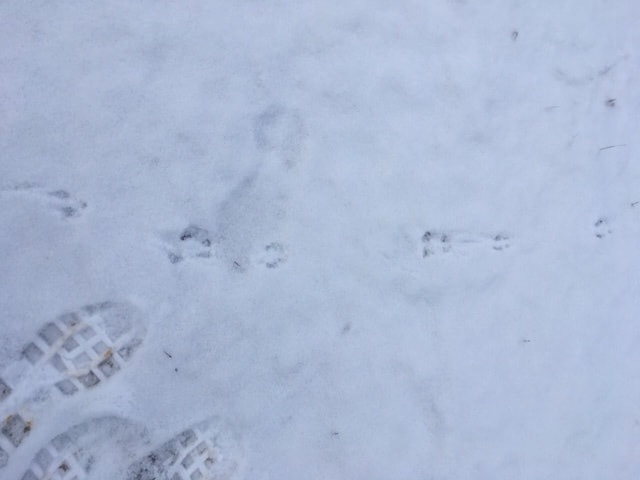
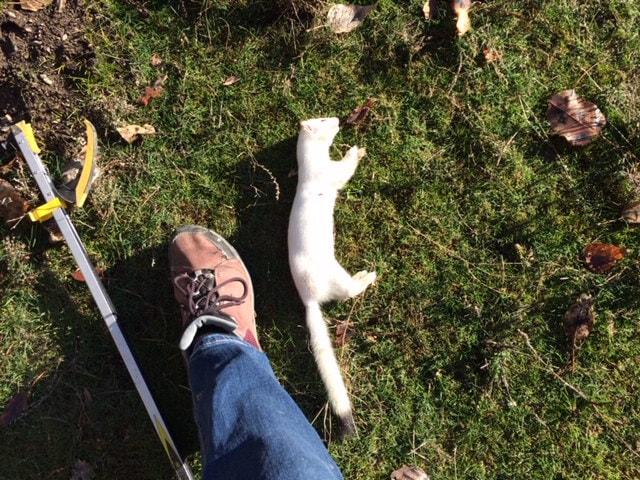
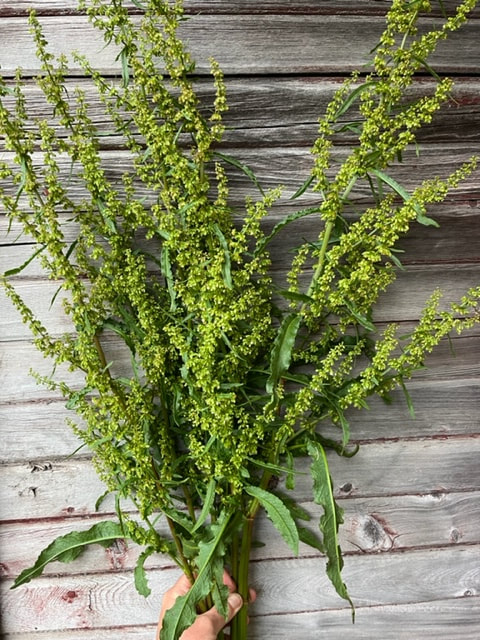
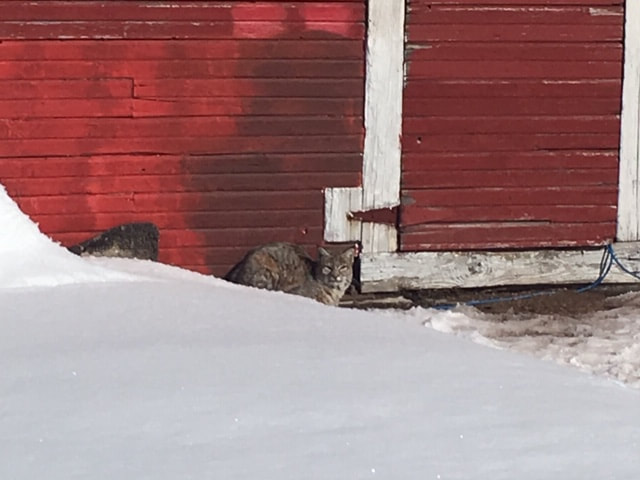
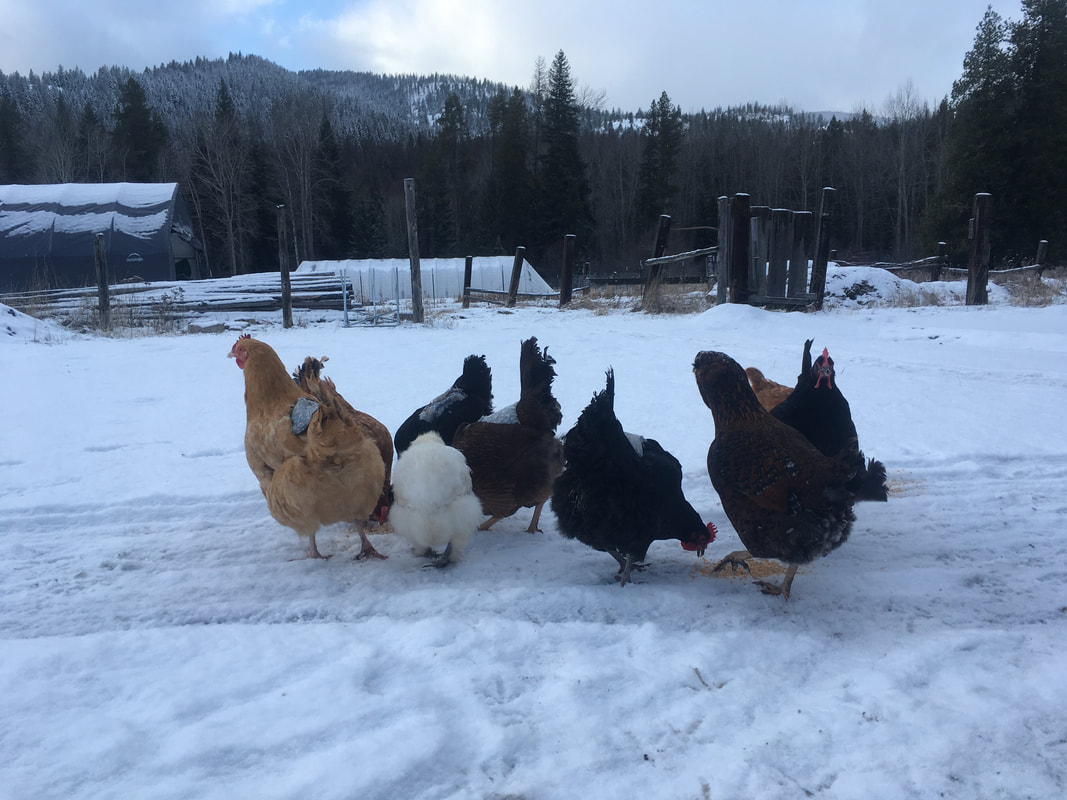
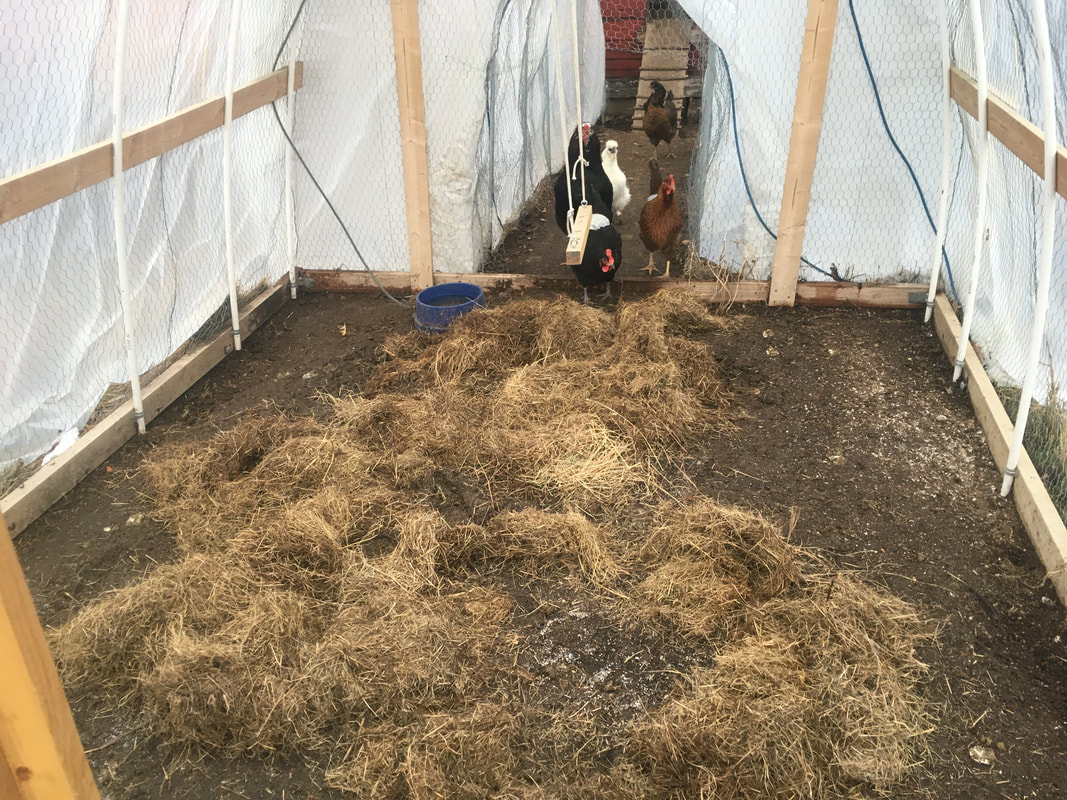
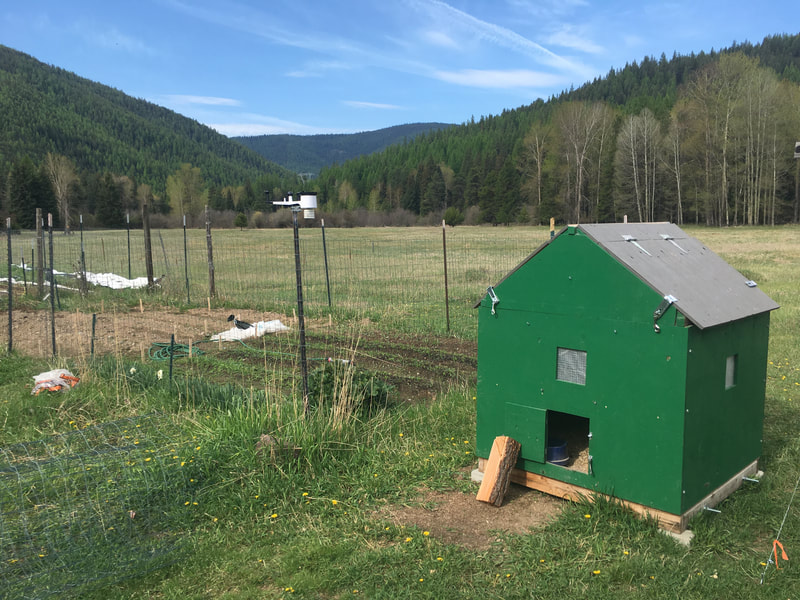
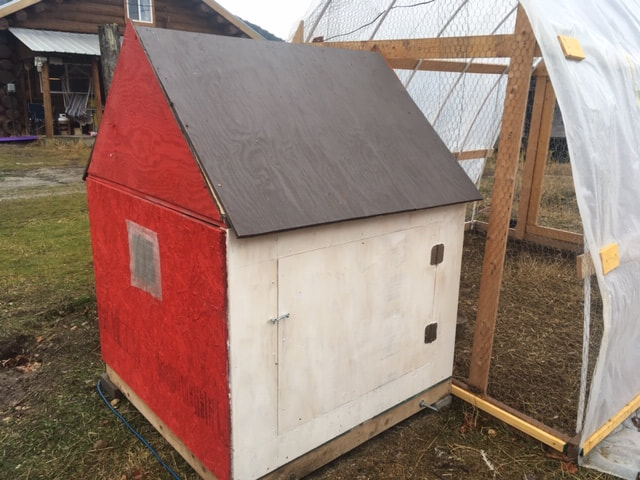
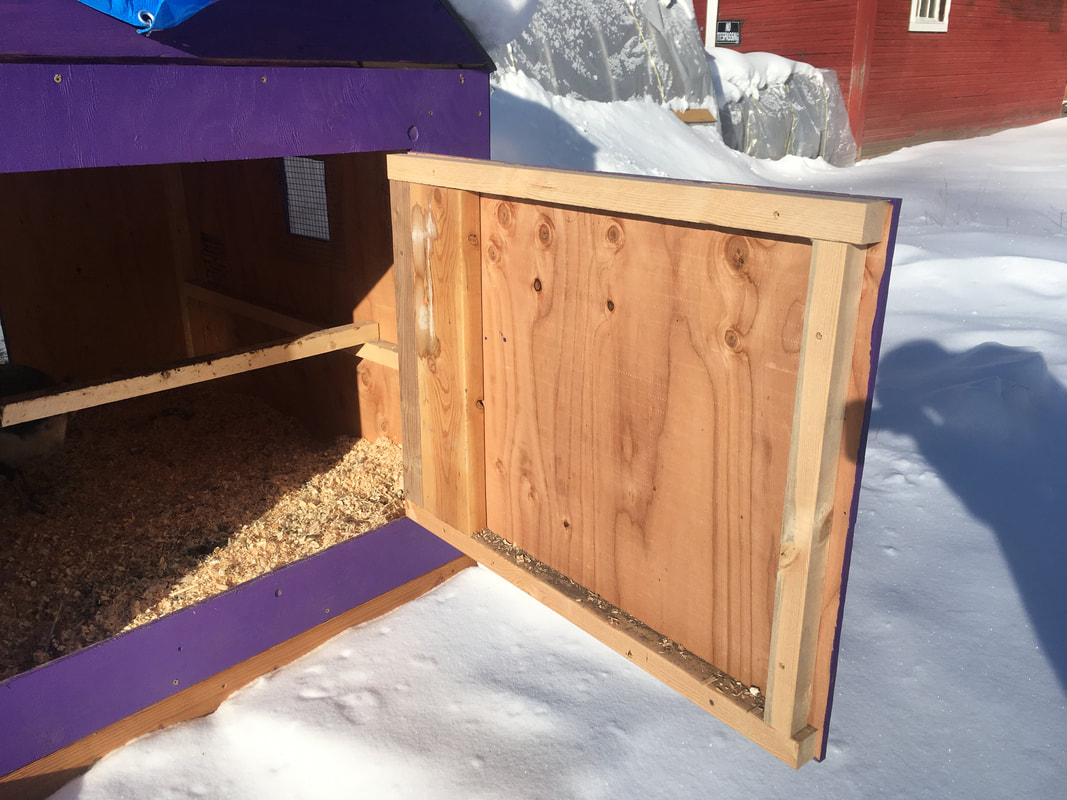
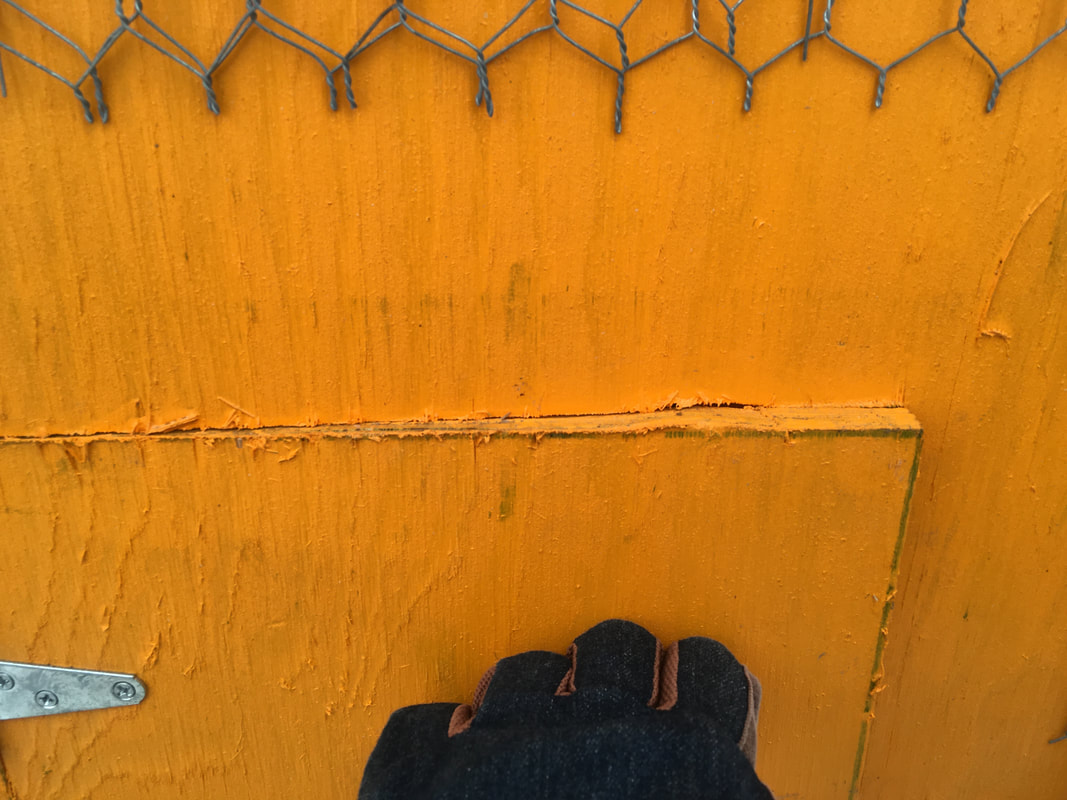
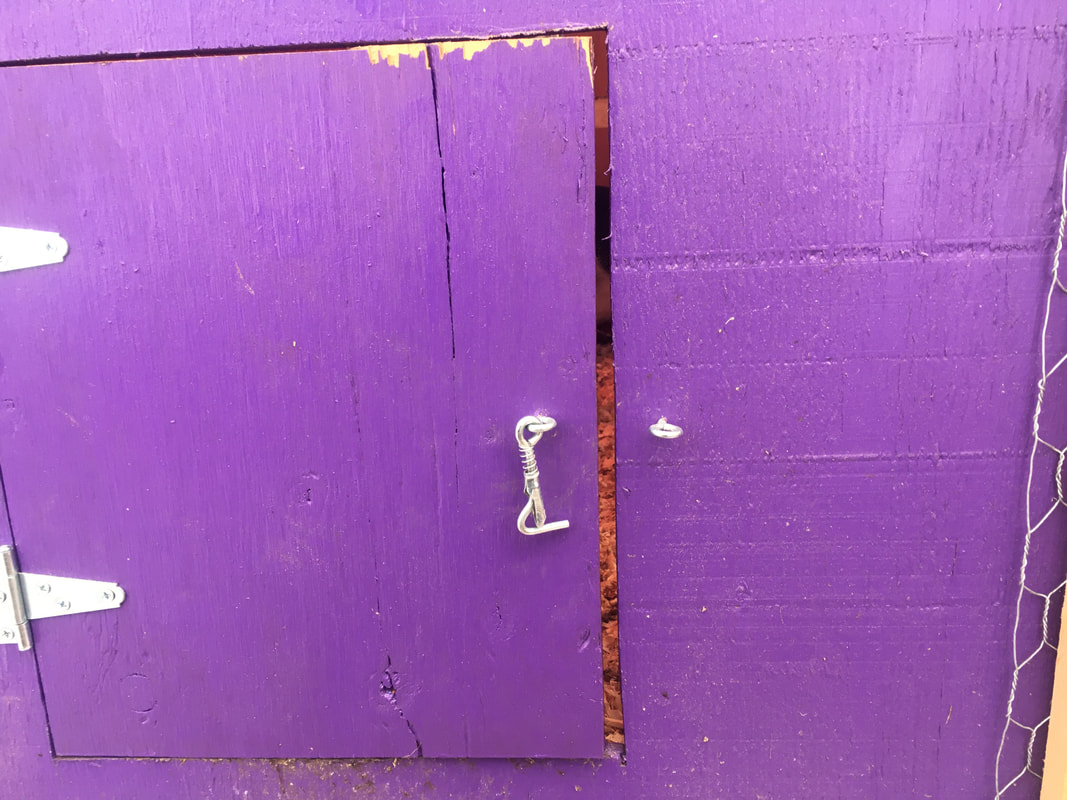
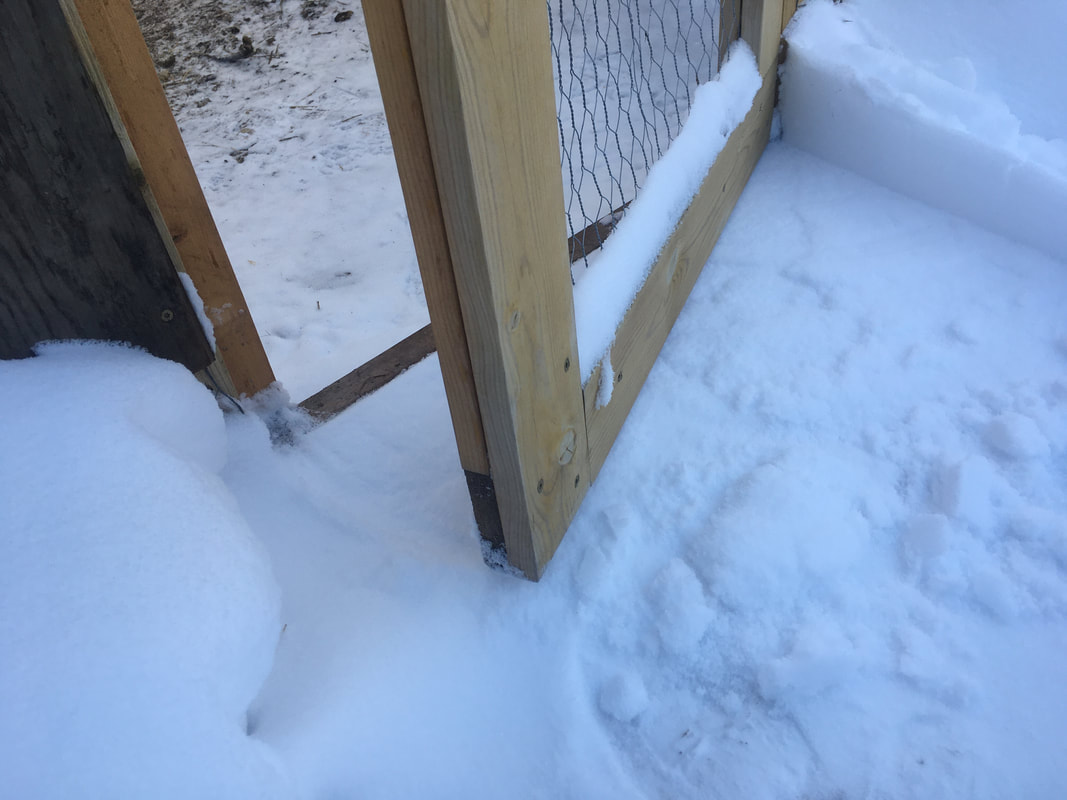
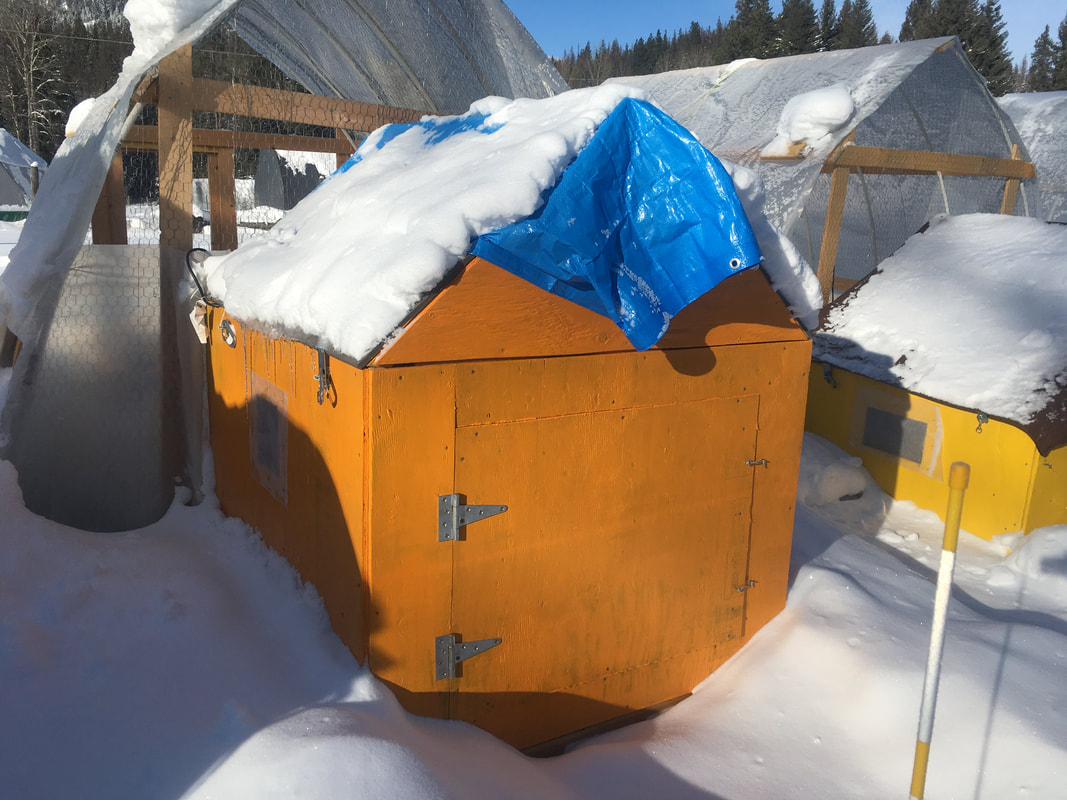

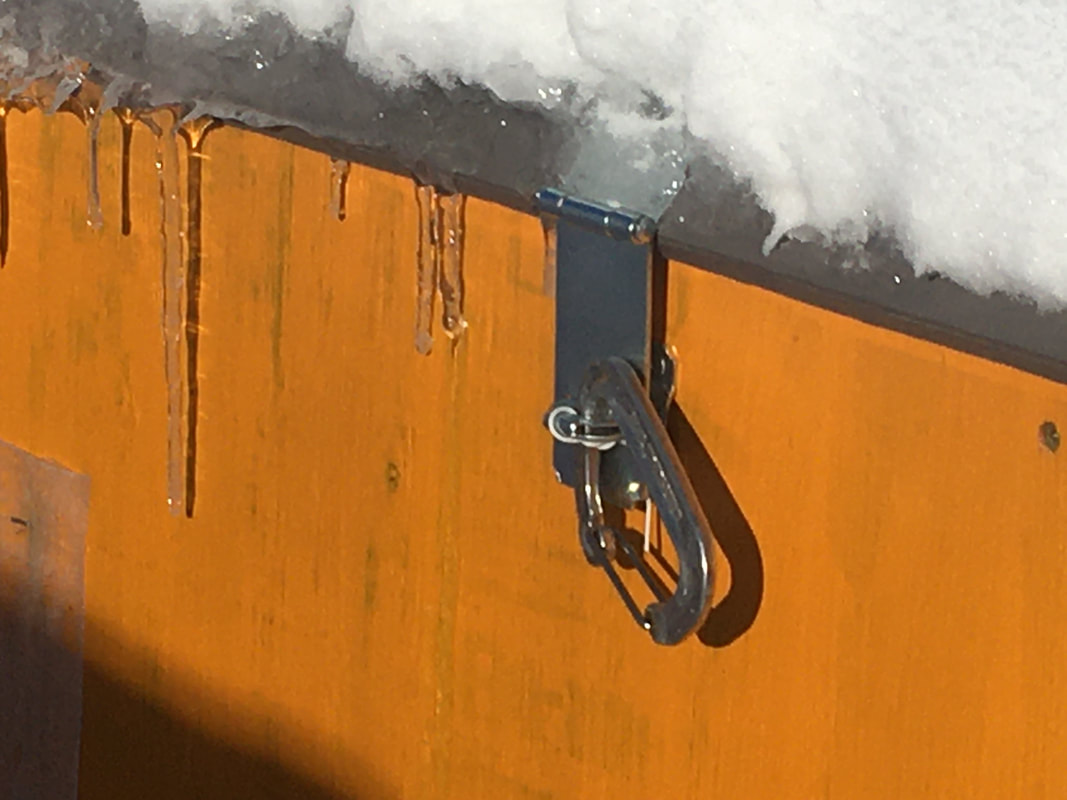
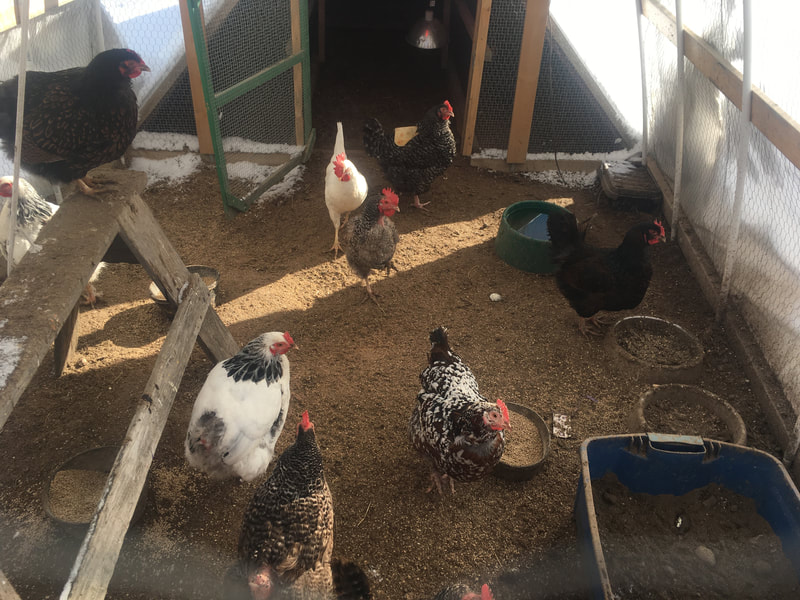
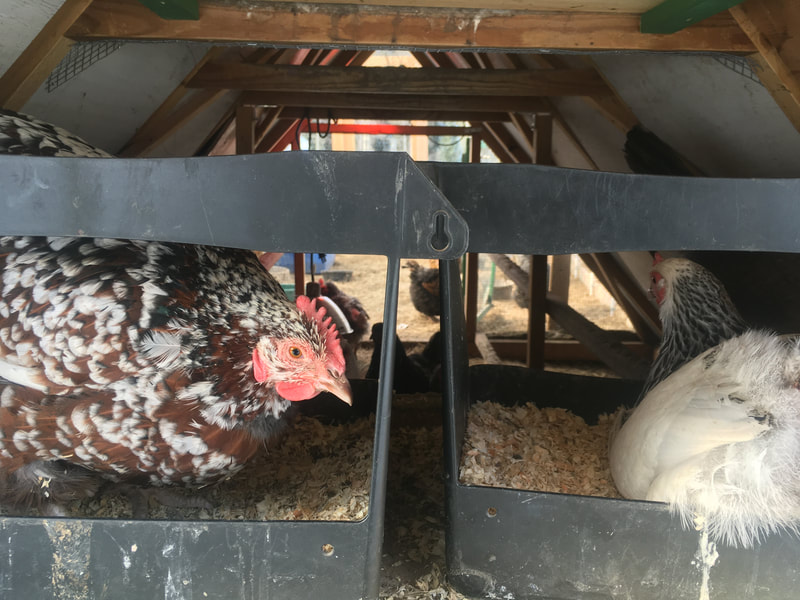
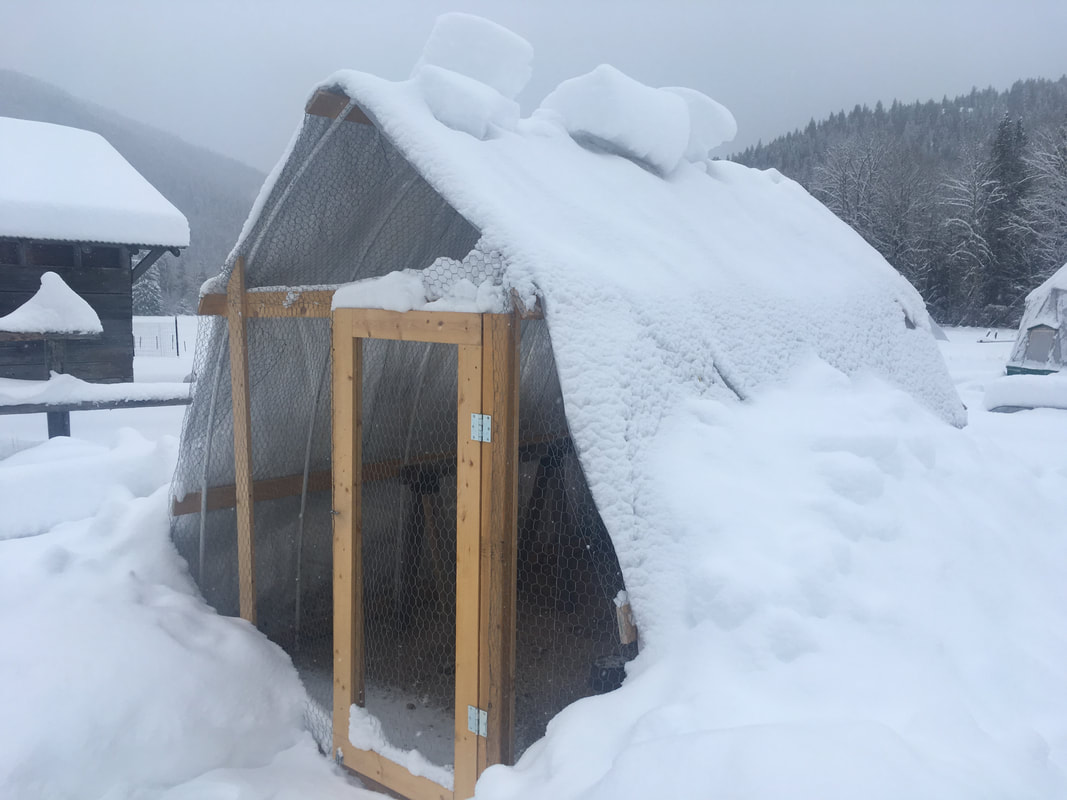
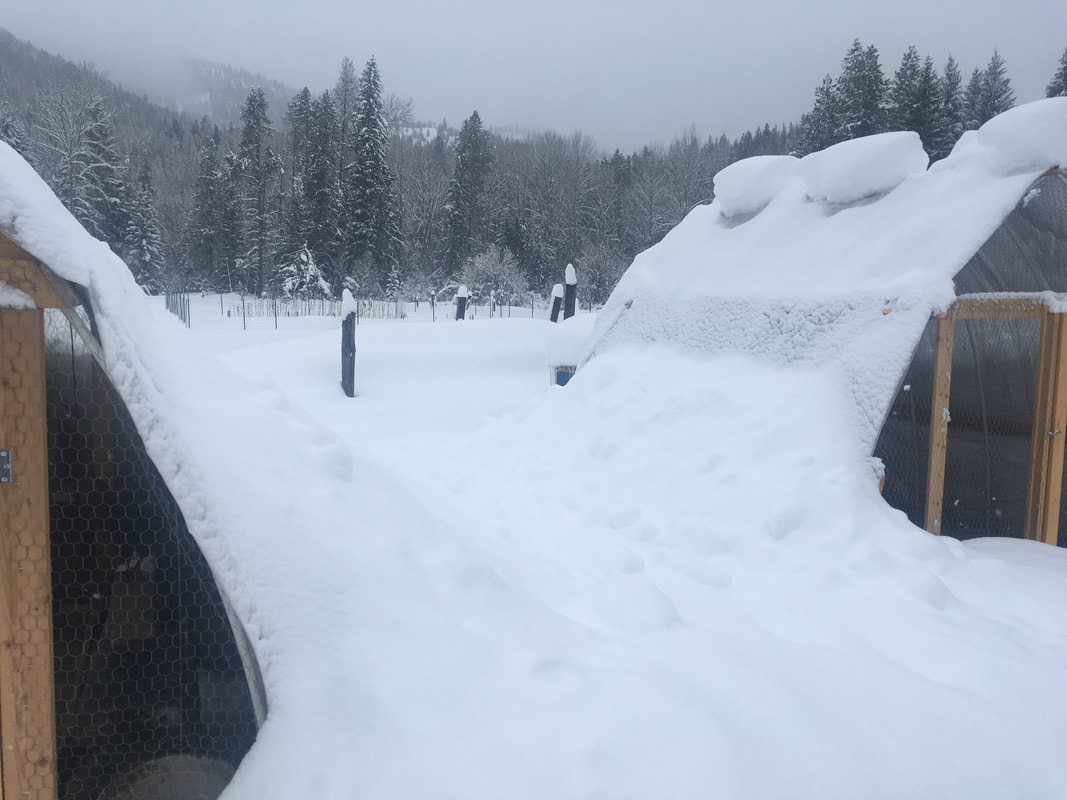
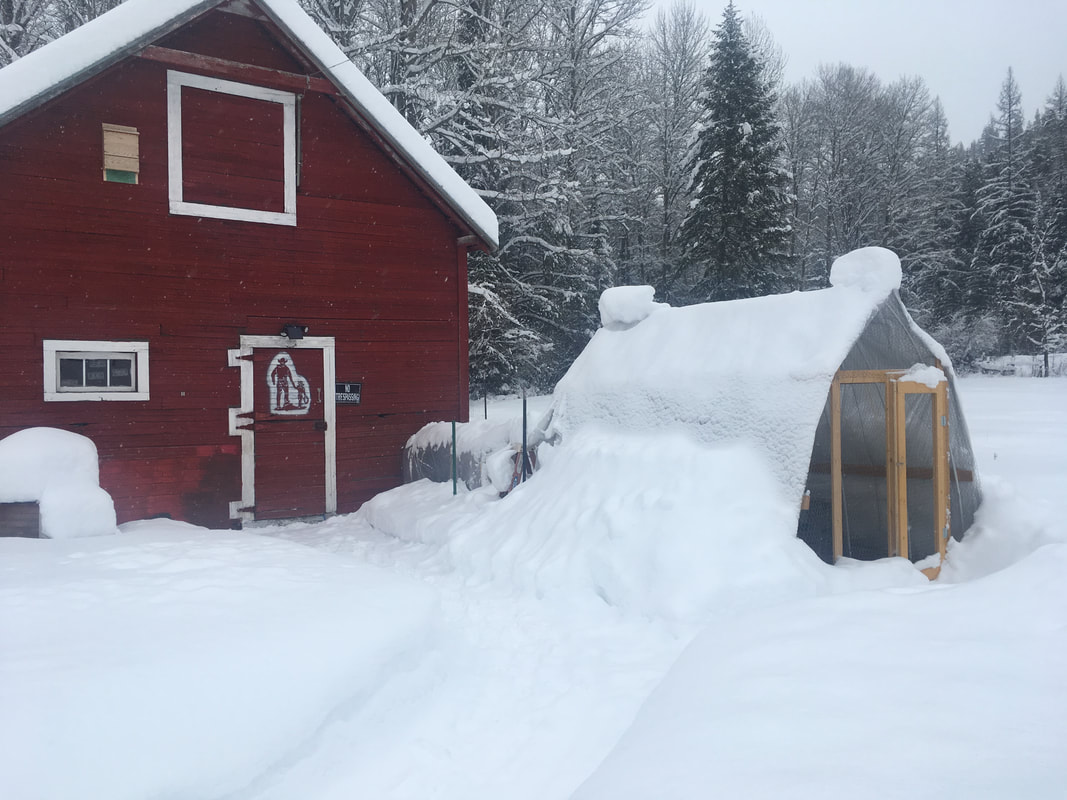
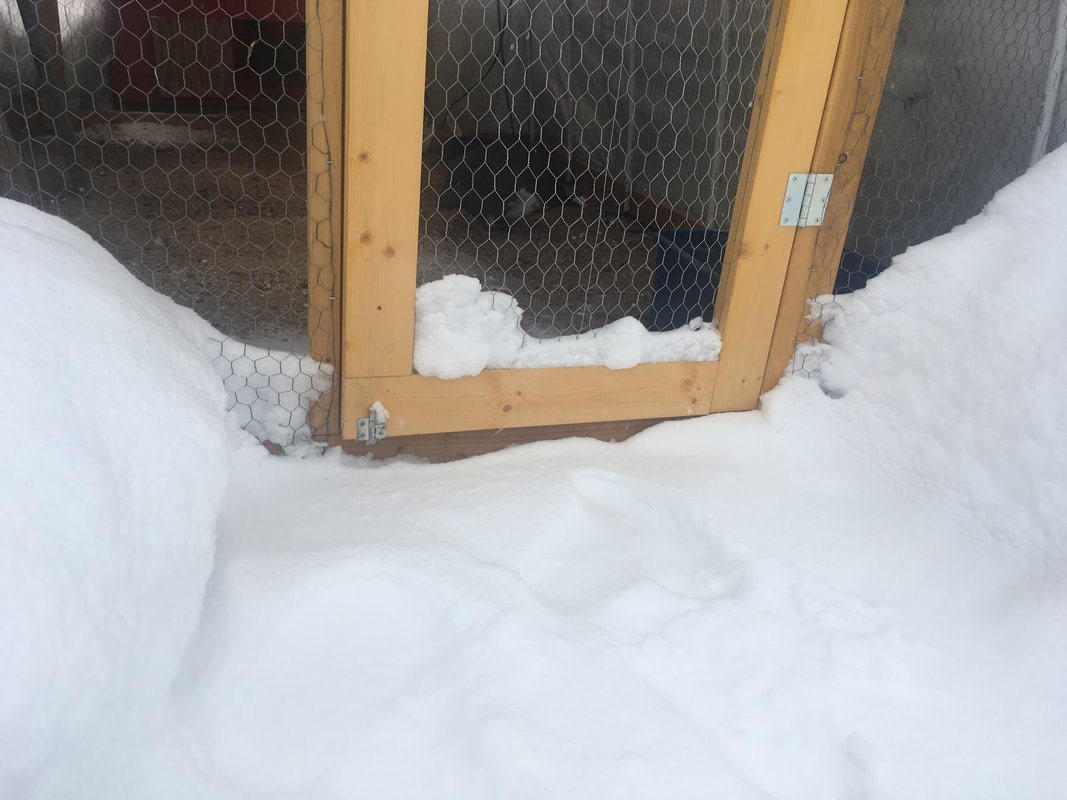
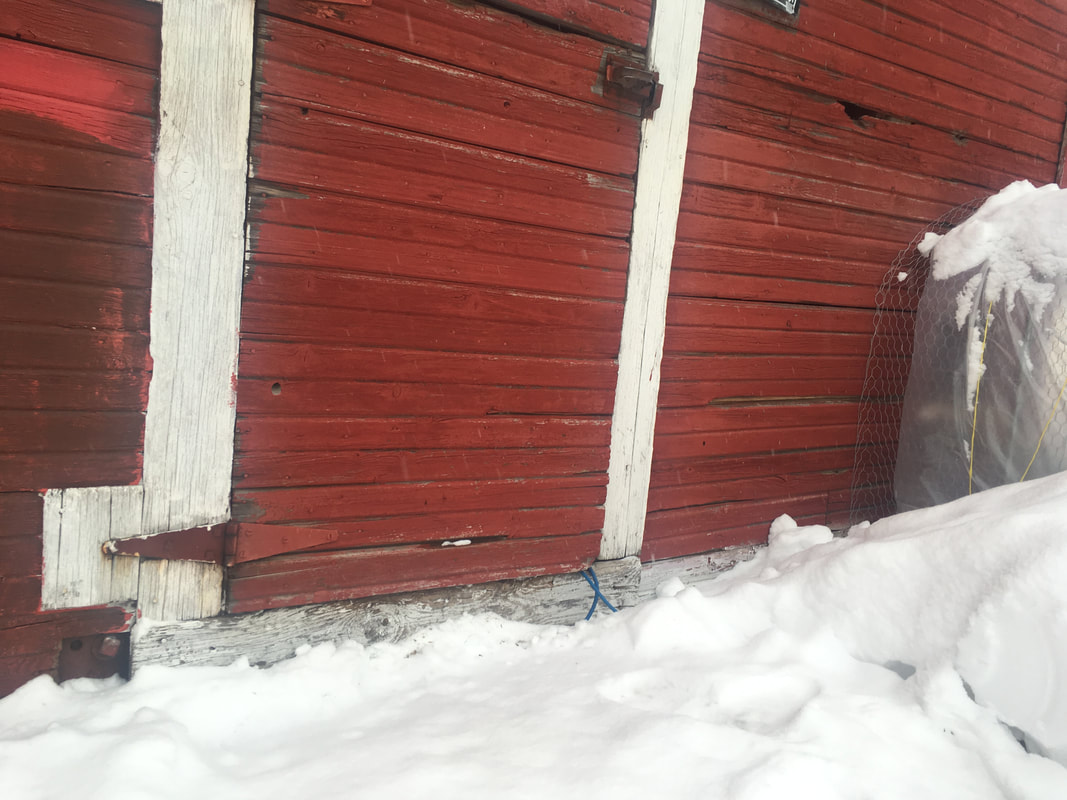
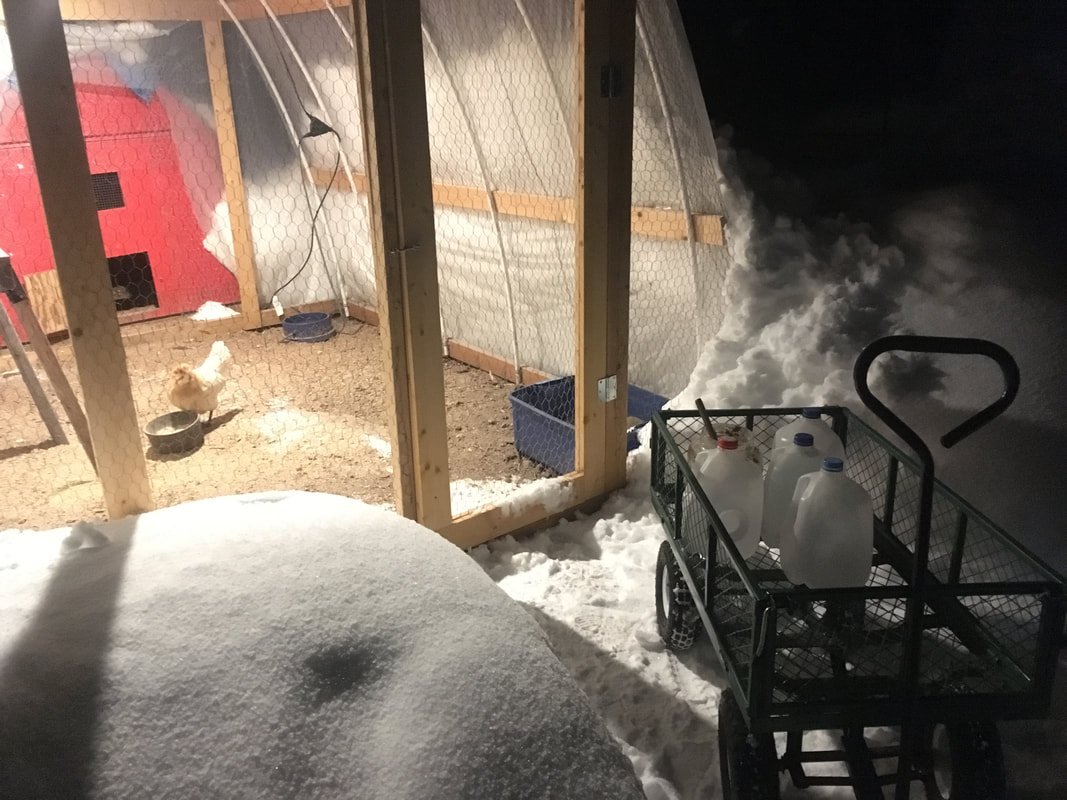
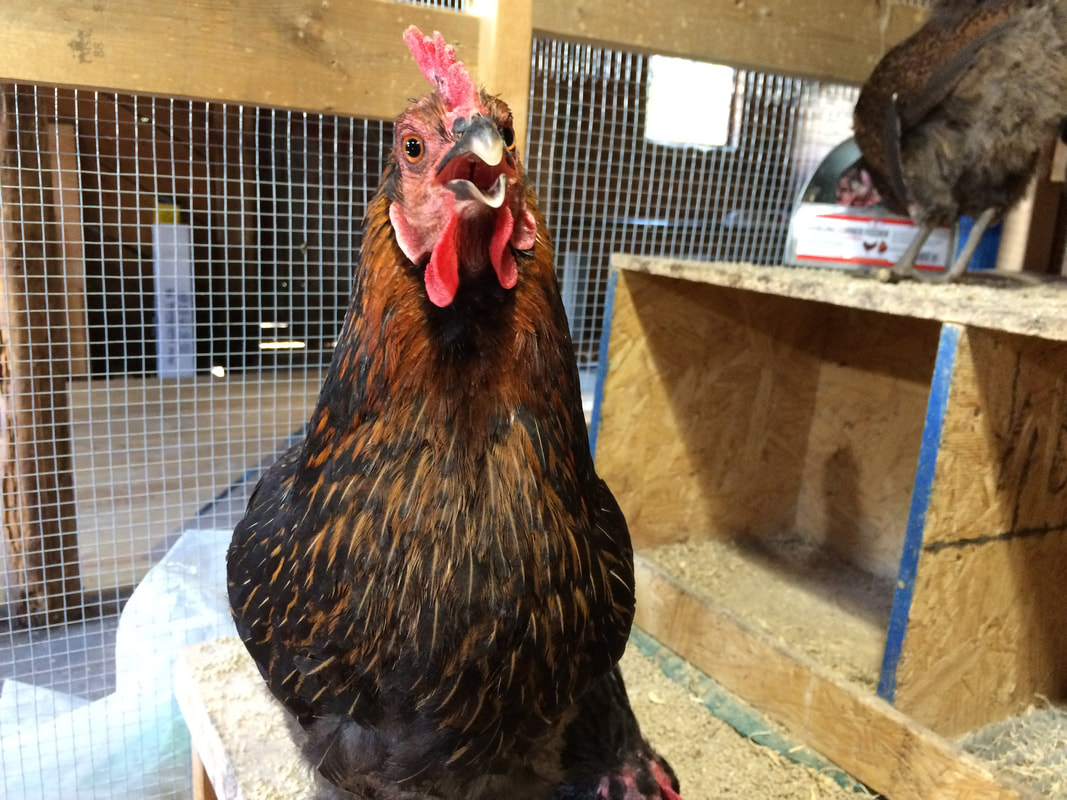
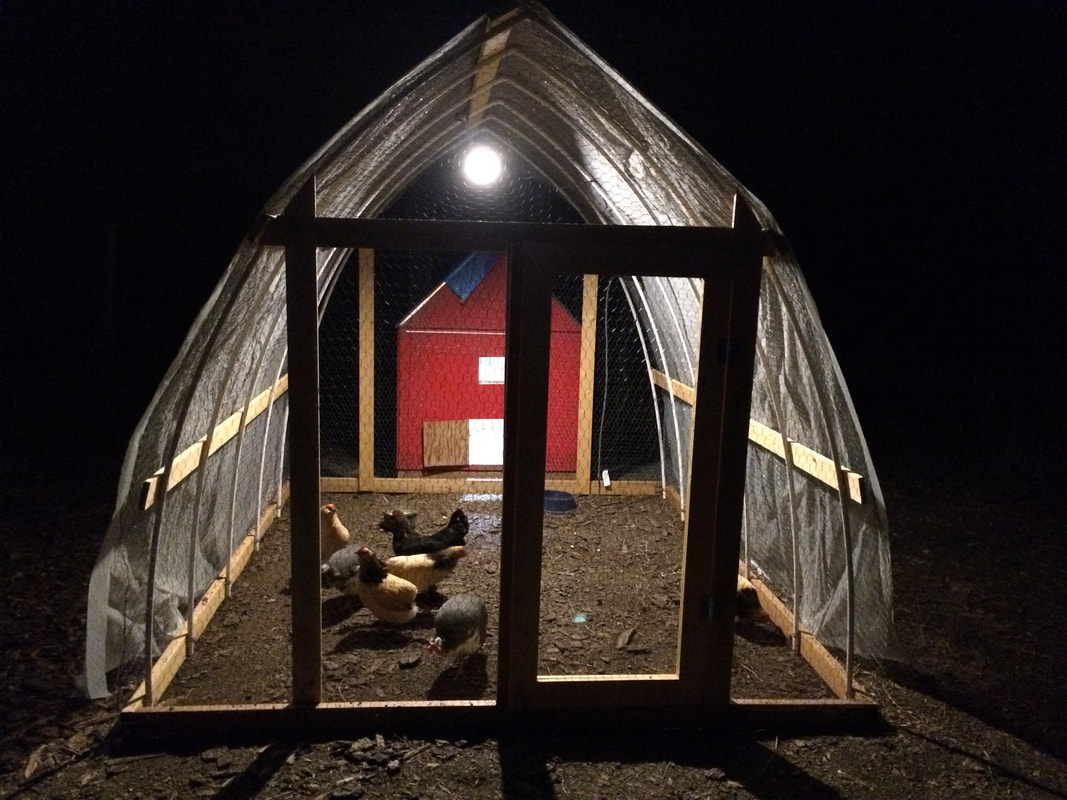
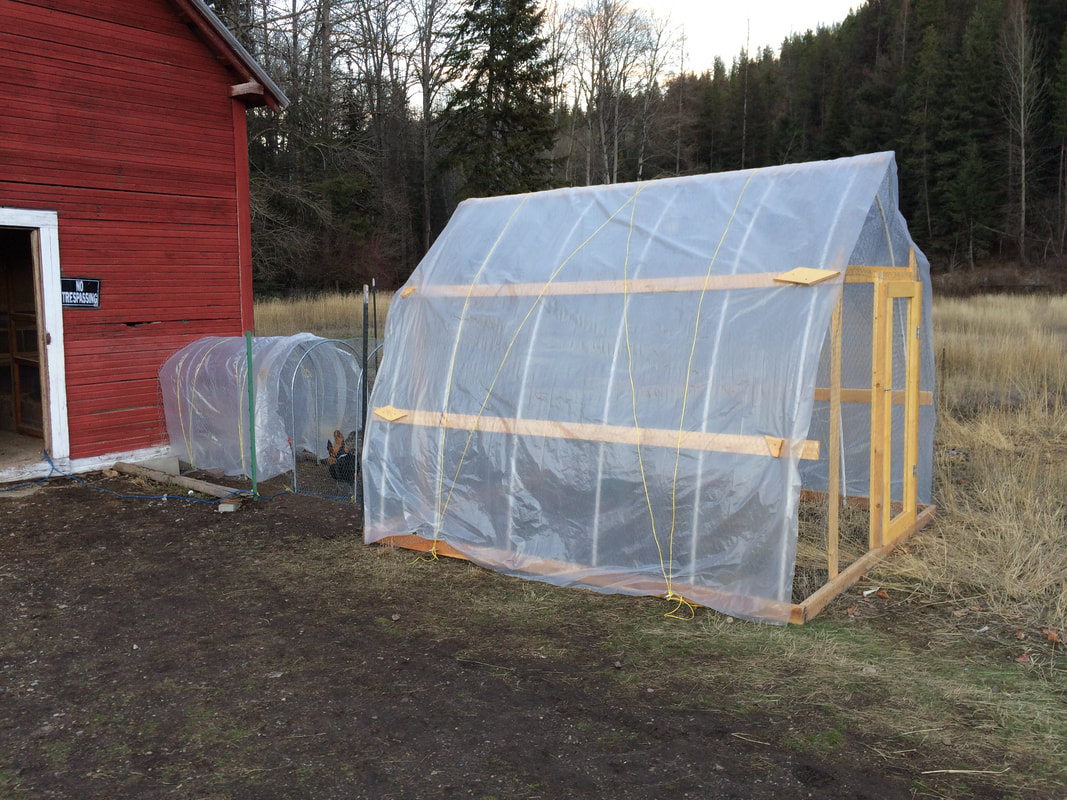
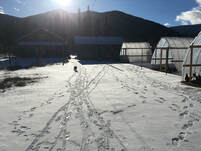
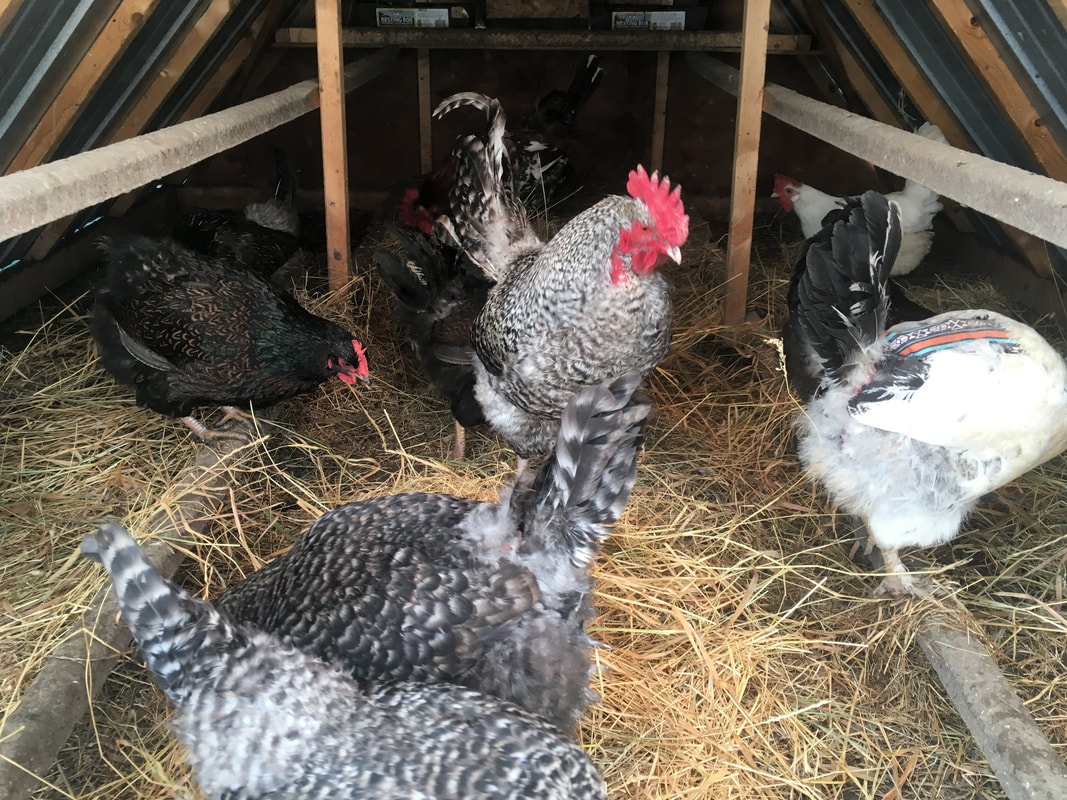
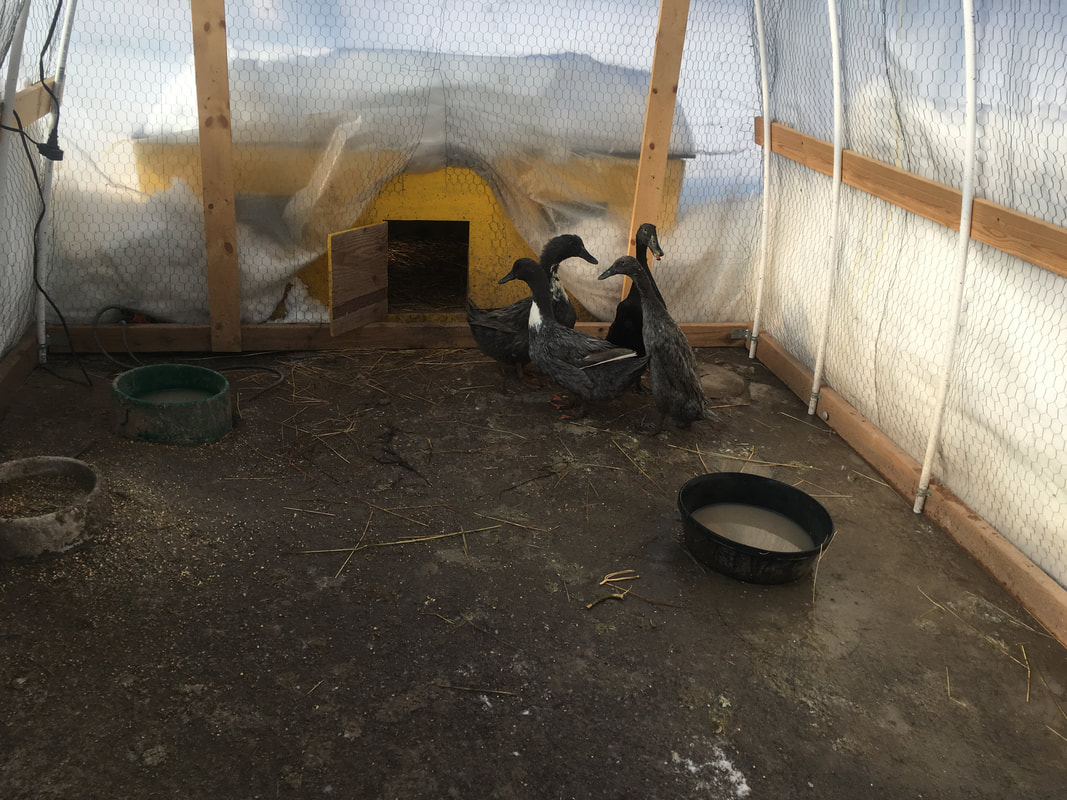
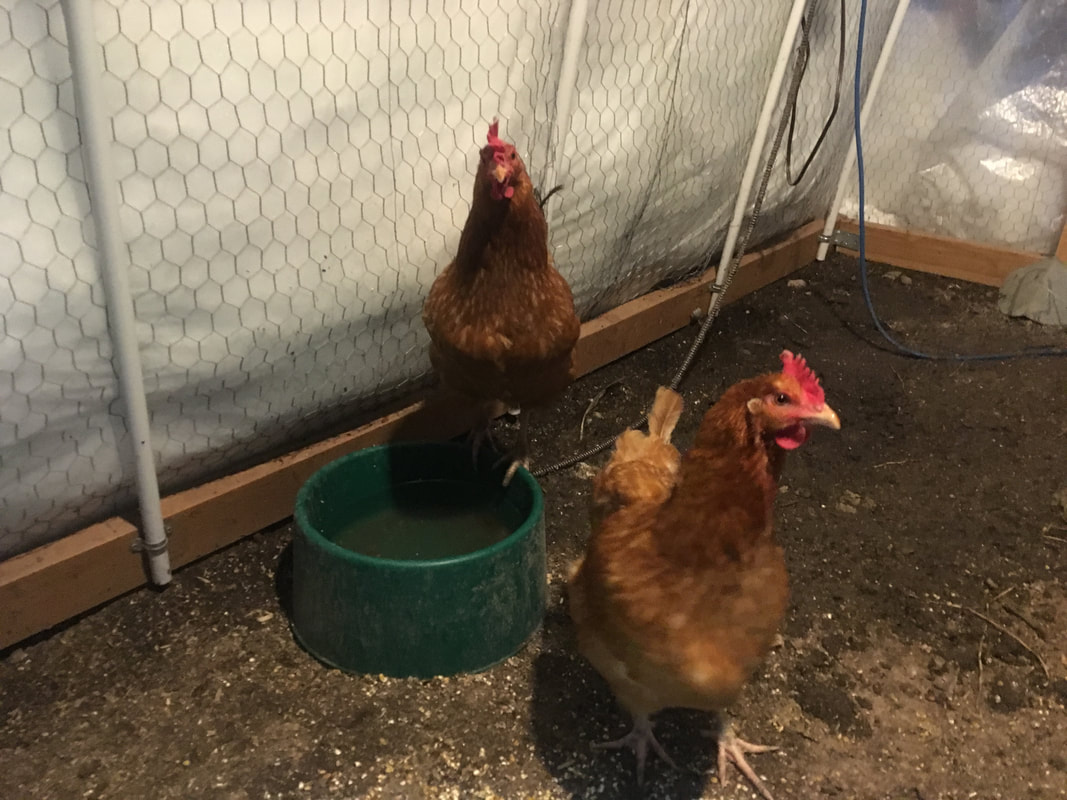
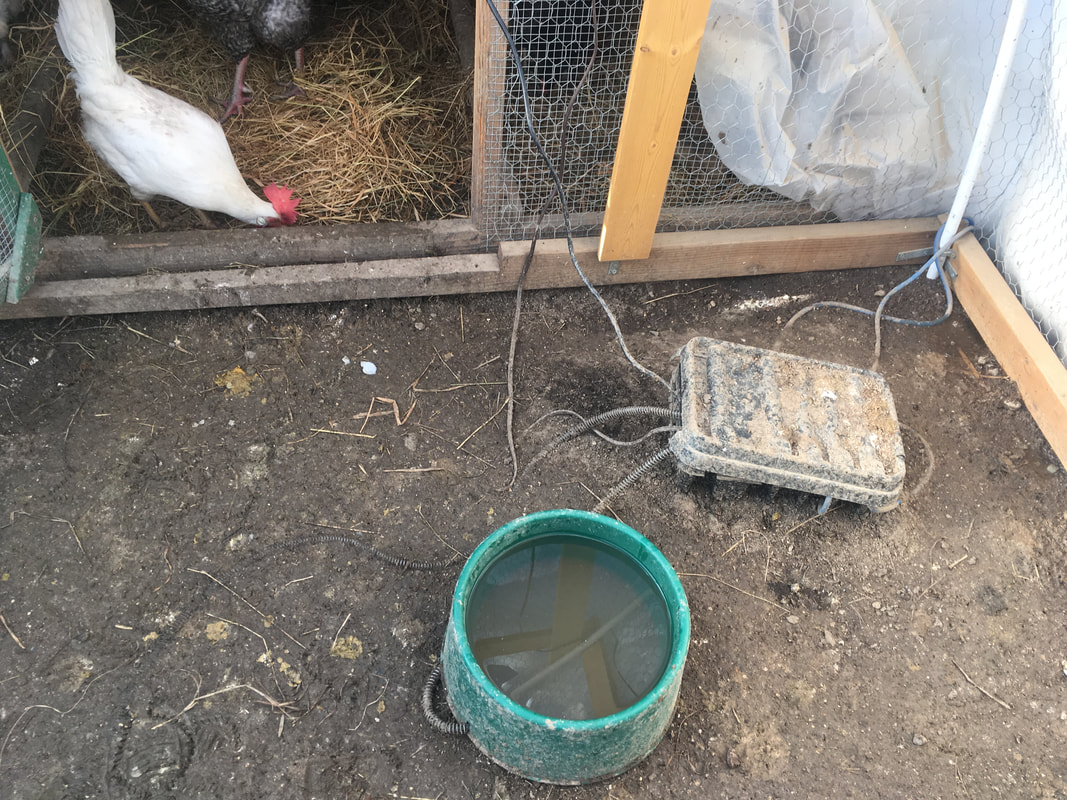
 RSS Feed
RSS Feed